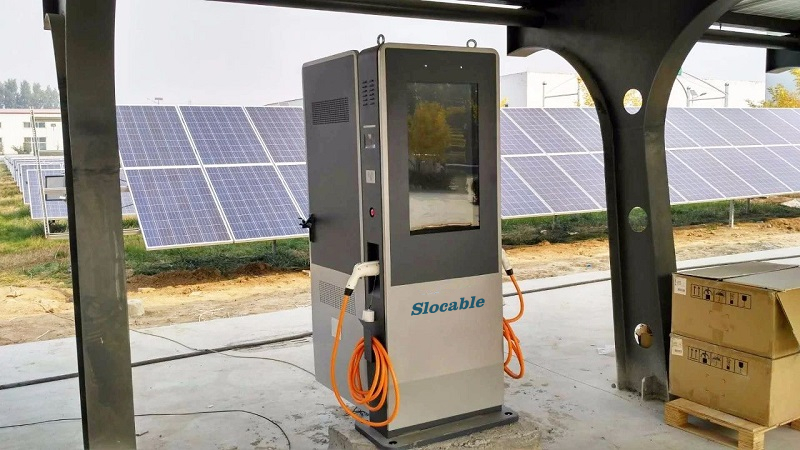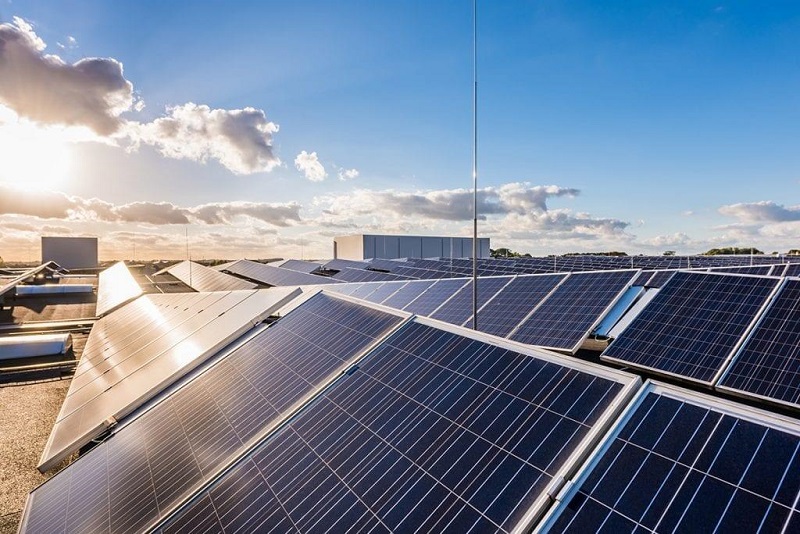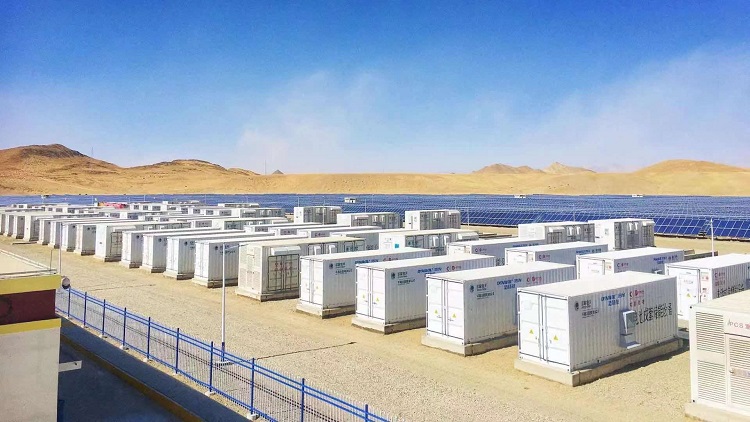- Home
- News
- Under the “Dual Carbon” Goal, Photovoltaic+Energy Storage+Charging Industries Welcome New Opportunities
Under the “Dual Carbon” Goal, Photovoltaic+Energy Storage+Charging Industries Welcome New Opportunities
Since China formulated the “dual carbon” goal, the development of photovoltaic + energy storage + charging has been in full swing. So, how should magnetic material companies, magnetic component companies and companies in the photovoltaic + energy storage + charging industries seize this opportunity for development?
With the implementation of China’s dual carbon goals, the state and local governments have promulgated a number of relevant policies in the fields of photovoltaic + energy storage + charging this year, which has promoted rapid construction in this field.
Photovoltaic + energy storage + charging integrated charging stations are typical representatives in the fields of photovoltaic + energy storage + charging. Due to their integrated photovoltaic power generation, large-capacity energy storage batteries, smart charging piles and other technologies, they can provide both for electric vehicles Green electric energy can also realize auxiliary service functions such as power peak shaving and valley filling, which can effectively improve system operation efficiency. It is favored by new energy vehicle companies and pile companies, and they have invested in the construction of photovoltaic + energy storage + charging integrated charging stations.
The so-called photovoltaic + energy storage + charging actually involve the photovoltaic industry, energy storage industry, charging pile industry and new energy automobile industry, and these four major industry sectors are the main end markets for magnetic components and power supplies. The rise of photovoltaic + energy storage + charging fields has brought a broad market development opportunity for magnetic component manufacturers.
The development of photovoltaic + energy storage + charging fields is in full swing. This article will focus on the application and upgrading of magnetic materials and magnetic components in photovoltaic + energy storage + charging systems. The technical difficulties and development difficulties faced by this field will be better To grasp the future development direction, provide practitioners who are deeply involved in this industry with a better understanding of the ecology of the photovoltaic + energy storage + charging industries.
What are the Market Prospects for Photovoltaic + Energy Storage + Charging?
The current development speed of photovoltaic + energy storage + charging is still relatively slow. On the one hand, because this field is an emerging industry in the past two years, it takes a certain amount of time for everyone to accept new things. On the other hand, the current complete set of photovoltaic + energy storage + charging systems are expensive.
Photovoltaic + energy storage + charging modes help to break the whole society’s doubts about the unenvironmental power sources of new energy vehicles. Photovoltaics have peaks and valleys, and the integration of photovoltaic + energy storage + charging can effectively reduce the waste of light energy and it can also make the charging of new energy vehicles more environmentally friendly.
At present, the installed capacity of photovoltaics is increasing. The pain point of users is that they cannot be stored, or even if they are stored, they cannot bring value to them. However, these pain points can be solved through photovoltaic + energy storage + charging.
In terms of development, the development of photovoltaic market is supported by national policies, that is, to achieve carbon peak by 2030 and carbon neutralization by 2060. From the perspective of this goal, it will not be completed in a moment and a half. It needs to continue for a long time. At the same time, in terms of shipments, the annual PV installed capacity is increasing, with an annual growth rate of more than 8%. In addition, there is a tide of replacement of some original photovoltaic products. Moreover, after the proposal of the dual carbon plan, it is excellent good news for the magnetic component industry and will promote the rapid development of photovoltaic + energy storage + charging fields.
What are the Requirements for Magnetic Materials and Magnetic Components in Photovoltaic + Energy Storage + Charging Systems?
Because photovoltaic + energy storage + charging systems are generally high-power and high-current, there are certain requirements for the voltage resistance, temperature stability and heat dissipation of magnetic components and other components. Almost all the magnetic materials used have been changed to high-frequency magnetics. Therefore, the two magnetic materials, iron silicon and iron silicon aluminum, are widely used in this industry, and more use materials with frequencies up to 30K.
In addition, the volume of magnetic components can be reduced as much as possible through vertical winding process and flat wire design. It is worth mentioning that due to the particularity of the photovoltaic + energy storage + charging market itself, it is not used by the whole people. Therefore, the order demand for magnetic components is often small in quantity and many types, which affects the implementation of automatic production to a certain extent.
From the perspective of the type of use, most of the magnetic materials on the market will be used, including amorphous, magnetic powder cores and so on. High-performance magnetic materials can help magnetic components to reduce their volume and loss. Compared with traditional ferrite products, they are more competitive in the market.
What are the Main Reasons that Affect the Development of Photovoltaic + Energy Storage + Charging Markets? How to Solve it in the Future?
1. The market demand for high frequency and high power puts forward multiple requirements for magnetic components such as high density, high frequency, and heat dissipation. This is also the main technical problem faced by magnetic components. In order to meet the needs of the photovoltaic + energy storage + charging markets, in addition to adjusting the design process, it is ultimately necessary to implement the research and development and improvement of magnetic materials.
2. In addition to technical problems, cost issues are also the main reason that affects the development of photovoltaic + energy storage + charging markets. Because of the high power requirements and the high requirements for safety and reliability, the design process of magnetic components becomes more complicated and the process is more difficult, which makes it difficult to implement automation and requires more flexible manual methods for production. In addition, the power density of magnetic materials is high, and the performance requirements of magnetic materials are also higher. The selected magnetic materials are also more expensive, and the overall cost will rise.
The core of the higher construction cost of photovoltaic + energy storage + charging lies in batteries. For batteries, the cost of equipment for producing and developing batteries is relatively high, the technology is difficult, and the cost of batteries is difficult to reduce in a short time. If you want to reduce costs in the future, it will mainly start from the technical solutions of batteries, and then the upstream and downstream of the supply chain will also need to cooperate to reduce costs.
3. One reason that currently affects the development of photovoltaic + energy storage + charging is also the high cost of early R&D investment. At present, magnetic materials and magnetic components are in a bottleneck period that can meet most market needs but is difficult to go further. More fine-tunings are made on the original basis to improve performance, but important breakthroughs in materials have not yet been achieved. Only by achieving a breakthrough in magnetic materials, the performance of magnetic components will be significantly improved.
4. The current energy efficiency conversion of photovoltaics has not yet fully reached the requirements of marketization, the energy efficiency conversion is low, and the power supply is insufficient, which cannot adapt to the wide application of charging stations. Energy efficiency conversion is an urgent bottleneck problem that currently affects the development of photovoltaic + energy storage + charging markets, and it is also a key technological breakthrough direction in the future. In fact, compared with previous years, photovoltaic power generation has made great breakthroughs in energy efficiency conversion, but it still cannot meet the application requirements of current charging stations. The solution to the technical problems of energy efficiency conversion cannot be achieved by leaps and bounds in a short time. However, with the advancement of technology and the improvement of energy efficiency ratio, the photovoltaic + energy storage + charging markets will enter an era of rapid development.
The country has been vigorously promoting the development of photovoltaic + energy storage + charging markets in recent years, and the future prospects are very broad. As the country strengthens its requirements for “carbon peak and carbon neutral” indicators, new energy industries such as photovoltaics and wind energy will develop more rapidly. Photovoltaic + energy storage + charging are policy-oriented industries, which are obviously affected by the policy. With the long-term implementation of the dual-carbon policy, this market will usher in a longer period of development.
At present, photovoltaic + energy storage + charging are more of a form of auxiliary power generation, storage, and charging. They have not yet fully met the needs of the market, but they must be important models and development trends for future energy use. On the whole, there has been a lot of good news from various aspects such as national and local policies this year, which will help promote the development of the entire photovoltaic + energy storage + charging industries.
In the future, the integration of photovoltaic + energy storage + charging super charging stations will be a major trend, but the market cultivation is estimated to take a long time. In addition, from the perspective of devices, the increase in raw material prices will increase the overall cost, and the shortage of chips will affect the expansion of the market to a certain extent. However, with the subsequent increase in the number of new energy vehicles, the demand for electricity will be greater, and during the peak of summer electricity consumption, there will definitely be more and more similar photovoltaic and energy storage charging stations. It should be noted that it will take a long time to cultivate the domestic market, especially for household photovoltaic + energy storage + charging modes, which are basically still in the tentative stage. Perhaps in developed countries and sparsely populated areas, the promotion of applications will be faster.
Although the current household energy storage system looks uneconomical based on the rate of return on investment, with the reduction of costs, the expansion of the market, and the support of the national “dual-carbon” policy, household-side photovoltaic + energy storage + charging piles The integrated model will achieve economic results.
Summary
Since the state put forward the “dual carbon” goal of carbon peak and carbon neutrality, the market share of enterprises in the photovoltaic + energy storage + charging fields and related supporting facilities has continued to expand. In addition, the policy of curtailment of electricity and production has greatly promoted the energy storage economy. Even Huawei officially announced on October 18 that it has successfully signed the world’s largest energy storage project so far-Saudi Arabia’s Red Sea New City Energy Storage Project, with a scale of 1,300MWh.
At present, most people in the magnetic materials and magnetic components industry are optimistic about the future market of photovoltaic + energy storage + charging, and believe that the development of this industry will bring broad market value-added space to the magnetic materials and magnetic components industry. With the rise of the times, the photovoltaic + energy storage + charging industries are also facing challenges.
From the point of view of technical difficulties, since the photovoltaic + energy storage + charging system has the characteristics of high current and high frequency, it has high requirements for magnetic components and power supply in terms of permeability, withstand voltage, temperature stability, safety and reliability, which needs to be solved from the perspective of magnetic materials. It is understood that many magnetic material enterprises have launched high-frequency and low loss high-frequency magnetic materials suitable for the system by strengthening the cooperation with universities or independent research and development. Among them, iron silicon and iron silicon aluminum composite materials are magnetic materials with high frequency in the current photovoltaic + energy storage + charging system. It is believed that with the breakthrough and improvement of the performance of magnetic materials, China’s domestic magnetic components and power supply can meet the requirements of photovoltaic + energy storage + charging system.
From the perspective of market promotion difficulties, the main reason for the large-scale development of the current photovoltaic + energy storage + charging industry is that the construction of the current system requires higher costs. On the one hand, the performance requirements of magnetic materials are high, and the increase in R&D investment has led to the increase in the cost of magnetic materials; on the other hand, the production process requirements for magnetic components have increased, making it difficult to fully implement automated production, and labor costs have also risen; On the other hand, the requirements for the production process of magnetic components are improved, it is difficult to fully implement automatic production, and the labor cost is also rising; Moreover, the research and development of the battery required by the photovoltaic + energy storage + charging system is difficult and requires long-term technology research and development investment, so as to keep the overall cost of the system at a high level in a short time. In addition, the photovoltaic + energy storage + charging industry is obviously policy oriented, and its industry development depends on national and local policy support. Once there is no policy support, it is difficult to expand the market.
However, the country is currently vigorously supporting the construction of photovoltaic + energy storage + charging systems. As a long-term plan, the dual-carbon plan will last until 2050. It can be expected that the next 30 years will be a high-speed period for the development of the photovoltaic + energy storage + charging industry. Magnetic material companies and magnetic component companies should grasp this period of development and take the lead in layout!


